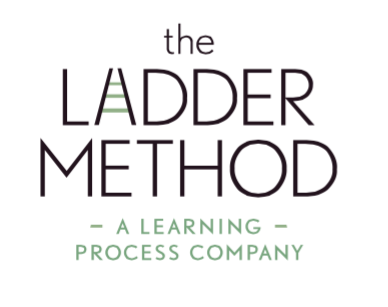What Is The Best Bedtime Routine For A Child With ADHD?
Is your child constantly leaving bed at night for another hug, a drink, or just one more question? Do they wake several times and have trouble settling back to sleep? Does every morning feel like a struggle just to get them out of bed? These are common hurdles for families raising kids with ADHD, and they often cause ongoing stress for both parents and children.
Sleep issues affect a large portion of children diagnosed with Attention Deficit Hyperactivity Disorder. Research shows that as many as 70% of these kids face ongoing difficulties with sleep. Almost half of parents describe their child’s sleep troubles as moderate to severe. Before adolescence, 10 to 15 percent already experience problems falling asleep, double the rate of their peers. As they grow older, the challenges intensify. Many adults with ADHD report lying awake for over an hour each night.
These sleep disruptions can stem from both behavioral habits and underlying medical reasons. That’s why creating a structured and predictable routine for a child with ADHD can make a dramatic difference. A stable nightly rhythm helps the brain and body prepare for rest, leading to calmer evenings and smoother mornings.
Understanding Sleep and Its Challenges
How Much Sleep Is Essential for Optimal Health?
Understanding how much rest your child needs is a key part of building a healthy routine for a child with ADHD. Proper sleep helps regulate emotions, improve focus, and reduce impulsive behavior. Without it, daily challenges can feel overwhelming for both the child and family.
Newborns (0–3 months) need 14–17 hours of sleep per day, including short naps. Their brains rely on long rest periods for early development. Infants (4–11 months) should get 12–15 hours, often split between nighttime and naps. Simple cues like dim lighting or soft sounds help build early sleep patterns.
Toddlers (1–2 years) need 11–14 hours of sleep. Sticking to a set bedtime reduces resistance and night wakings. Preschoolers (3–5 years) do best with 10–13 hours. A consistent routine with calming activities makes bedtime smoother and reduces overstimulation.
Children aged 6–13 require 9–11 hours to support learning and behavior. ADHD symptoms often worsen when sleep is disrupted, so bedtime consistency is critical. Teenagers (14–17 years) need 8–10 hours, though screen time and school stress often interfere. A structured evening schedule helps them relax and fall asleep faster.
Young adults and adults (18+ years) should aim for 7–9 hours. Parents who follow their own routines also model positive habits for their children. A routine that includes winding down, limiting screens, and going to bed at the same time each night supports better mental and physical health.
Creating a reliable sleep schedule makes a huge difference in managing ADHD symptoms and promoting overall well-being.
Sleep Challenges in ADHD: Behavioral Factors
Children with ADHD often face sleep problems that resemble those seen in kids without the diagnosis, but they happen more frequently and intensely. A consistent routine for a child with ADHD becomes even more essential when behavioral patterns interfere with falling or staying asleep. These children may also struggle more if they have Oppositional Defiant Disorder (ODD), making bedtime an even greater challenge.
Many parents report bedtime refusal, where a child flat-out resists going to bed. Procrastination is also common, your child may suddenly need water, another story, or one last hug. Once in bed, they might seem unable to relax, often tossing and turning with a mind that won’t slow down. They may leave the bed repeatedly, coming up with new excuses each time.
Frequent night wakings and restless sleep add to the problem. Some children also experience nightmares that disrupt sleep quality. Others find it extremely hard to wake up in the morning, no matter how much rest they appear to get.
Anxiety plays a major role for many children with ADHD. The thought of going to bed alone can spark strong resistance. Some may develop sleep associations, depending on specific conditions or objects to fall asleep. They might only settle if a parent stays in the room, if they hear the TV, or if they have a particular toy or dummy.
These patterns highlight the need for a structured and predictable nighttime plan. Establishing a clear routine for a child with ADHD can reduce anxiety, reinforce boundaries, and encourage independence at bedtime.
Sleep Disruptions in ADHD: Medical and Physiological Causes
Sleep-Related Breathing Disorders
Sleep-related breathing disorders include a range of conditions, from simple snoring to obstructive sleep apnoea (OSA). These issues are closely linked to behavioral concerns, particularly symptoms that resemble ADHD such as inattention, irritability, and restlessness. Children who struggle with breathing during sleep often display signs during the day that can easily be mistaken for classic ADHD behavior.
The connection between sleep-disordered breathing and ADHD is significant. Studies show that 25–30 percent of children diagnosed with ADHD also experience some form of disordered breathing during sleep. In contrast, only about 3 percent of children in the general population are affected. These breathing problems can worsen sleep quality, leading to fragmented rest and daytime fatigue.
Establishing a solid bedtime routine for a child with ADHD becomes even more crucial when underlying medical issues like sleep apnoea are present. Proper evaluation and treatment help improve both sleep and behavior over time.
Circadian Rhythm Sleep Disturbances
Circadian rhythm sleep disturbances happen when the body’s internal clock, which controls sleep-wake cycles, becomes misaligned. These cycles respond to light and darkness over a 24-hour period, helping the brain regulate when to feel alert or sleepy. When this rhythm gets disrupted, children may experience irregular sleep patterns and difficulty adjusting to a consistent schedule.
One of the most common issues is delayed sleep-phase disorder. This condition causes a child to fall asleep much later than expected and struggle to wake up at a regular time. It often looks like bedtime resistance, late-night energy, and morning fatigue. These patterns can lead to poor focus, irritability, and school struggles during the day.
For children with ADHD, a consistent routine for a child with ADHD can help regulate circadian rhythms. Simple strategies like dimming lights before bed and setting consistent sleep and wake times can promote more natural, restful sleep. When combined with tutoring services that cater to individual learning styles, children can achieve both cognitive and emotional balance.
Manifestations of Anxiety
Anxiety often disrupts sleep in children, especially when worries build up at bedtime. A child may feel scared to sleep alone, fear the dark, or become anxious about events at school—whether from the past day or what’s coming next. These worries tend to surface most when the environment is quiet and the mind is unoccupied.
Children with ADHD are especially prone to nighttime anxiety, making it harder for them to fall and stay asleep. Their thoughts may race, and their bodies struggle to relax, leading to prolonged bedtimes and frequent awakenings.
Establishing a calming routine for a child with ADHD helps reduce bedtime anxiety by offering predictability and comfort. When children know what to expect each night, it creates a sense of control that quiets fears and encourages emotional security.
Coaching can also help anxious children build coping skills. Through guided behavioral techniques, children learn how to self-soothe, use calming strategies, and gradually gain confidence in sleeping independently.
Use of Stimulant Medications
Stimulant medications, often prescribed for ADHD, can sometimes worsen existing sleep challenges or trigger new ones. Many children report having trouble falling asleep after starting these medications, especially if they already struggled with sleep initiation. The stimulating effects can delay the natural wind-down process, keeping the brain and body too alert at bedtime.
In some cases, the timing or dosage of the medication plays a role in how it affects sleep. Adjusting when the medication is taken or slightly lowering the dose may ease these side effects. It's important to work closely with a healthcare provider when making changes.
Even when medication is necessary, building a reliable routine for a child with ADHD can reduce sleep disruptions. A calming evening rhythm helps counteract the medication’s stimulating effects, allowing the child to shift into rest mode more smoothly.
Impact of Inadequate Sleep Habits
Poor sleep habits in children can severely disrupt daily life for the entire household. When a child doesn’t get enough rest, their daytime behavior and ability to function suffer. The effects are very similar to how adults feel after a late night, but even more pronounced in children especially when sleep deprivation becomes chronic.
You may notice your child feeling constantly tired or showing more irritability during the day. They may seem sluggish, need repeated prompting for basic tasks, or struggle to concentrate. Their coordination might appear clumsy, and careless mistakes become more frequent in schoolwork and routines. Emotional outbursts such as crying or aggression may occur with very little provocation.
These symptoms take a toll on the entire family. Parents, carers, and siblings often lose sleep when the child stays up late or wakes frequently. Tensions rise during rushed, chaotic mornings, leading to more stress and family conflict. Parents may feel overwhelmed by bedtime struggles, leaving little room for downtime or connection with partners. This often affects mood, relationships, and even job responsibilities, with many parents reporting being late or missing work altogether.
Without consistent, quality sleep, even the best ADHD treatments and learning supports fall short. That’s why a structured routine for a child with ADHD is not just helpful—it’s essential. A stable sleep schedule lays the groundwork for improved behavior, learning, and emotional balance at home and in school.
Improving Sleep and Treatment Options
Strategies for Enhancing Sleep Quality
Improving sleep in children with ADHD isn’t a quick fix. It takes time, patience, and a commitment to consistency. One of the most important first steps is addressing any underlying medical concerns. If sleep-related breathing problems or other health issues are suspected, referrals to an ENT specialist or sleep physician are often necessary. Ruling out medical causes lays the foundation for long-term success.
Once medical issues are treated, the focus should shift to sleep hygiene. Most children with sleep problems lack structured bedtime habits, which can make falling asleep difficult. Clear routines and calming sleep environments are essential. One of the biggest struggles for families is actually implementing and sticking to a routine. Many parents start with good intentions but find it hard to maintain consistency when faced with resistance.
Establishing a bedtime routine for a child with ADHD helps reduce chaos and provides predictable cues for the brain to wind down. Consistency is key, repeating the same steps each night creates security and helps children feel in control of the sleep process.
Effective Bedtime Practices for Better Rest
Creating a calm and predictable environment at night is essential when building an effective routine for a child with ADHD. Children respond best to clear structure, especially during transitions like bedtime. Start the routine at least 30 to 60 minutes before sleep to allow your child to wind down naturally.
Include soothing activities such as a warm bath, reading a quiet book, sharing a warm drink, or having a short, relaxed conversation. These consistent steps help the brain associate these moments with preparing for rest. Avoid stimulating or emotionally charged activities that can delay sleep and increase restlessness.
Make sure your child’s sleep space is clean, quiet, and free from distractions. Remove visible electronics like TVs, tablets, and gaming devices, as they can tempt children out of bed or trigger overexcitement. Also, avoid screen time whether from phones, consoles, or television for one to two hours before bed. The light and content from these devices can interfere with natural melatonin production, making it harder for the body to relax.
A calm, tech-free space paired with familiar bedtime cues helps children with ADHD shift more easily into a restful state.
Exploring Medication Options for Sleep Support
Role of Melatonin in Sleep Regulation
Melatonin is a hormone naturally produced by the brain in response to darkness, helping regulate the body’s internal clock. It plays an essential role in signaling when it’s time to fall asleep and wake up. This process is influenced by exposure to natural light throughout the day, especially around sunset.
For some children, especially those with difficulty settling down at night, melatonin supplements may offer additional support. It is available through a doctor’s prescription and should always be used under medical guidance. It’s important to know that melatonin may not produce immediate results. In many cases, it takes several nights of consistent use to evaluate its true effectiveness.
Combining melatonin with calming evening habits, a consistent bedtime, and a screen-free wind-down period can improve its results and support better sleep patterns over time.
Therapeutic Use of Clonidine for Sleep Support
Clonidine is a medication sometimes prescribed in low doses to help children who struggle to fall asleep. Some healthcare providers recommend administering it about one hour before bedtime to take advantage of its sedative properties. It works by calming the nervous system and typically offers about four hours of sleep support.
Although Clonidine can be effective, it also lowers blood pressure, which is why its use has become less common in recent years. The potential side effects require careful consideration, and it should only be used under close medical supervision. When prescribed, it is often part of a broader plan that includes behavioral strategies and proper sleep routines.
Parents considering Clonidine should consult with their child’s doctor to evaluate both the risks and benefits and to explore safer alternatives when appropriate.
Conclusion
Helping a child with ADHD establish a solid bedtime routine is one of the most powerful tools a parent can use. With consistent steps, calming activities, and a tech-free sleep environment, families can reduce nighttime battles and ease morning chaos. Addressing both behavioral and medical sleep disruptions fosters better emotional regulation, focus, and overall family harmony. While results take time, patience and persistence pay off. Remember, routines aren't rigid. They’re supportive anchors that build security and predictability. By prioritizing healthy sleep habits and seeking professional help when needed, families can create lasting improvements in both rest and daily life.
FAQs
What time should a child with ADHD go to bed?
Aim for a bedtime that allows 9–11 hours of sleep, typically between 7:30–9:00 p.m. for school-aged children.
Can diet affect sleep in children with ADHD?
Yes. Sugary foods, caffeine, and artificial additives may worsen hyperactivity and disrupt sleep patterns.
Should I allow naps if my child has trouble sleeping at night?
Short naps (under 30 minutes) early in the day may help; avoid late or long naps.
How long does it take to establish a successful bedtime routine?
Most children adjust within 2–4 weeks if the routine is consistent and predictable every night.
Are white noise machines helpful for children with ADHD?
Yes. White noise can reduce distractions and create a soothing environment that promotes faster, deeper sleep.


